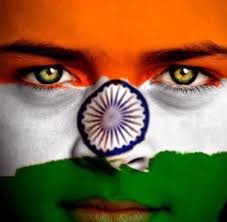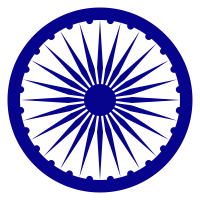INDEPENDENCE DAY
The republic of India gained its independence from the rule of the British on 15 August 1947. Since then, this date of 15 August is celebrated as the Independence Day in India to commemorate its freedom from the 200-year-old British government.
For India, 15 August is a day of her re-birth, a new start. At the midnight of 15 August 1947, the British rulers handed the country back to its Indian leaders, ending a remarkable struggle that lasted years. It was 15 August 1947, the historic date, on which sovereign India's first Prime Minister Pandit Jawaharlal Nehru unfolded the tricolour flag of the nation on the glorious Red Fort. The day is significant in the history of India as bringing an end to the British colonial rule in India.
In 1757, after the British victory in the Battle of Plassey, the rule of East India Company started in India. By 1858, the British Crown had assumed control over India. The situation after World War I was marked with suppressive and exploitative laws by the British. This led to revolutionary calls for independence, and sparked the phase of non-violent and non-cooperation movements followed by civil disobedience.
The enduring leader and a national symbol for all these movements was Mohandas Karamchand Gandhi- the Father of the Nation. The next decades were marked with constant struggles between the Indians and the British for freedom. Many movements and acts were carried out by the Indian National Congress, freedom fighters and the people of India.

What is the significance of 15th August in India
The republic of India gained its independence from the rule of the British on 15 August 1947. Since then, this date of 15 August is celebrated as the Independence Day in India to commemorate its freedom from the 200-year-old British government.
For India, 15 August is a day of her re-birth, a new start. At the midnight of 15 August 1947, the British rulers handed the country back to its Indian leaders, ending a remarkable struggle that lasted years. It was 15 August 1947, the historic date, on which sovereign India's first Prime Minister Pandit Jawaharlal Nehru unfolded the tricolour flag of the nation on the glorious Red Fort. The day is significant in the history of India as bringing an end to the British colonial rule in India.
History of 15th August
In 1757, after the British victory in the Battle of Plassey, the rule of East India Company started in India. By 1858, the British Crown had assumed control over India. The situation after World War I was marked with suppressive and exploitative laws by the British. This led to revolutionary calls for independence, and sparked the phase of non-violent and non-cooperation movements followed by civil disobedience.
The enduring leader and a national symbol for all these movements was Mohandas Karamchand Gandhi- the Father of the Nation. The next decades were marked with constant struggles between the Indians and the British for freedom. Many movements and acts were carried out by the Indian National Congress, freedom fighters and the people of India.
MEANING AND SIGNIFICANCE OF INDIAN FLAG
The national flag of India is also known as Tricolour Flag means Tiranga as it contains tricolours. Indian flag is designed-horizontally using three colour, wheel in the centre and Khadi clothe. The national flag was adopted on 22nd of July in 1947 in the wake of Indian independence from British rule. Indian Flag was designed and adopted as a symbol of the nationalism and freedom
SAFFRON
The topmost part of the national flag is designed using saffron colour which indicates courage and selflessness of the nation. It is the common and religiously significant color of the religions like Hindu, Buddhist and Jain. Saffron colour indicates renunciation and absolution of the ego of the people belongs to different religion and unites to become one. Saffron colour is of great significance which reminds political leaders to devote towards the nation as well as perform their work dedicatedly only for the goodness of the nation without seeking any personal benefits.
White Colour
The middle part of the Indian national flag is designed using white colour which represents the honesty, purity and peace of the nation. According to the Indian philosophy, white colour also represents the cleanliness and knowledge. It lightens the path of truth in order to guide the nation. It reminds the Indian political leaders to lead the country to get the ultimate national goal by maintaining the state of peace.
Green Colour
The lowermost part of the Indian national flag is designed using the green colour which represents the faith, fertility and prosperity of the nation. According to the philosophy of India, green colour is a festive and stabilizing color which represents the life and happiness. It indicates the greenery of earth all over the India. It reminds the Indian political leaders to lead the country by protecting the Indian soil from destruction by both, external and internal enemies.
The Ashoka Chakra is a depiction of the dharmachakra; represented with 24 spokes. It is so called because it appears on a number of edicts of Ashoka, most prominent among which is the Lion Capital of Ashoka. The most visible use of the Ashoka Chakra today is at the centre of the Flag of India (adopted on 22 July 1947), where it is rendered in a navy blue colour on a white background, replacing the symbol of charkha(spinning wheel) of the pre-independence versions of the flag.
India's highest peacetime military decoration awarded for valour, courageous action or self-sacrifice away from the battlefield is also called Ashoka Chakra.
MAA TUJHE SALAM

No comments:
Post a Comment